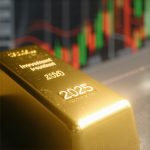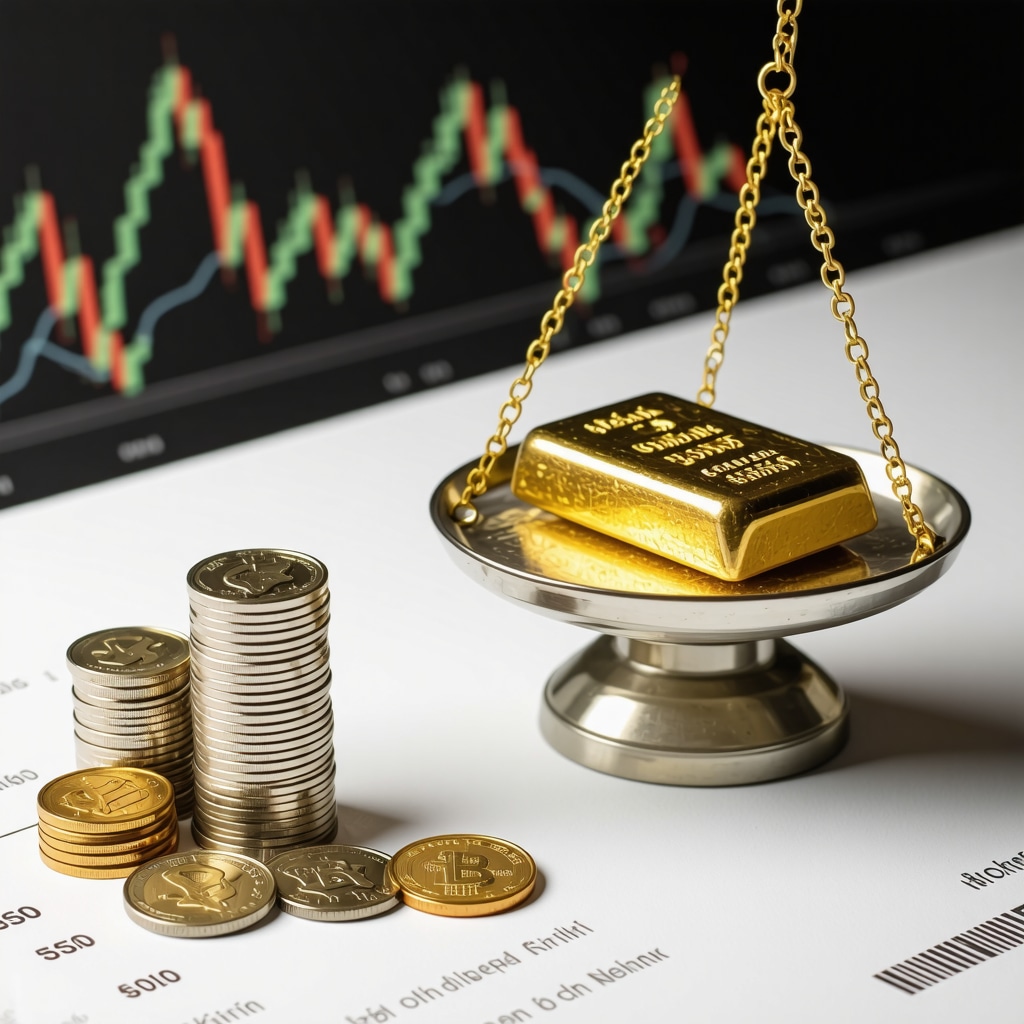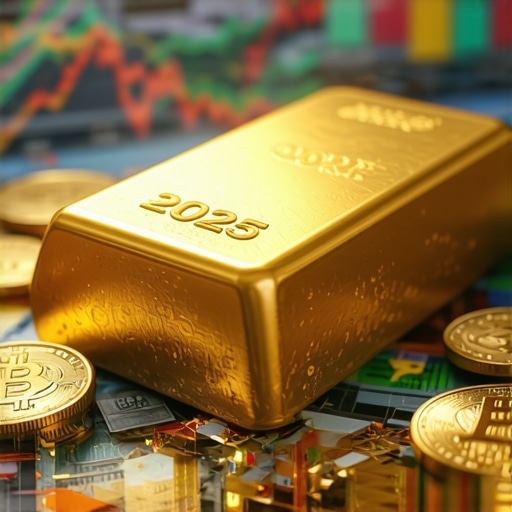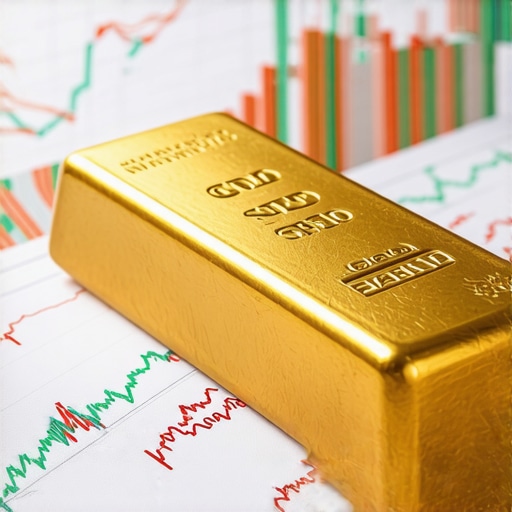Unveiling the Dynamics of Gold Supply: More Than Just Mining Output
Gold’s market price is deeply intertwined with its supply dynamics, which extend far beyond daily mining production. While global gold mine output remains relatively stable, typically around 3,000 metric tons annually, the availability of gold for investment and consumption is influenced by factors such as recycling, central bank reserves, and geopolitical shifts. For instance, the strategic decisions of central banks to either accumulate or release gold reserves can significantly tighten or loosen supply, thereby impacting prices. Understanding these subtle supply shifts is crucial for investors aiming to anticipate market movements.
Demand Drivers: From Jewelry to Industrial Applications and Investment Trends
The demand side of gold is remarkably multifaceted. Jewelry fabrication remains the largest consumer, particularly in emerging markets like India and China, where cultural preferences drive steady demand. However, investment demand — through physical bars, coins, ETFs, and gold-backed mutual funds — has surged as investors seek protection against inflation and economic uncertainty. Additionally, technological and industrial applications, although smaller in volume, add consistent baseline demand. This intersection of cultural, financial, and industrial drivers creates a complex demand landscape that shapes price trajectories.
How Do Shifts in Global Economic Sentiment Influence Gold Demand and Prices?
Global economic sentiment acts as a powerful catalyst affecting gold demand. During periods of heightened uncertainty — such as geopolitical tensions, inflation surges, or currency volatility — gold’s appeal as a safe haven intensifies. Investors flock to gold ETFs and physical holdings, pushing prices upward. Conversely, when economic confidence strengthens and risk appetite grows, demand for gold as a defensive asset can wane, exerting downward pressure on prices. This cyclical behavior underscores the critical importance of monitoring macroeconomic indicators and sentiment indices for forecasting gold market movements.
Central Banks and Their Strategic Gold Holdings: Market Movers
Central banks are among the most influential participants in the gold market. Their purchase or sale of gold reserves serves not only as a monetary policy tool but also as a signal to global markets. For example, consistent gold buying by central banks in recent years has contributed to tightening supply and supporting price levels. Investors should pay close attention to reports from institutions like the World Gold Council, which documents these transactions and their implications for price trends.
Interpreting Supply-Demand Imbalances: The Price Formation Puzzle
At its core, gold price formation results from the delicate balance between supply constraints and demand surges. Short-term disruptions in mining output, shifts in scrap gold recycling, or sudden spikes in investment demand can create immediate price volatility. Long-term trends reflect broader economic cycles, technological advancements, and evolving investor behavior. For instance, the growing popularity of gold ETFs has transformed how demand is aggregated and expressed in market prices, making it essential to analyze both physical and financial market indicators.
For investors keen on navigating these complexities, exploring understanding gold supply and demand trends for smart investing provides deeper strategic insights.
Engage and Share Your Perspectives on Gold Market Movements
How have your investment strategies adapted to the evolving supply and demand dynamics of gold? Share your experiences or questions below to foster a community of informed investors.
For authoritative insights on central banks and gold reserves, the World Gold Council’s research hub offers comprehensive data and analysis.
Gold Recycling and Its Subtle Yet Significant Influence on Supply
Beyond mining output, gold recycling represents a vital component of the overall supply equation. Annually, recycled gold contributes approximately 1,200 metric tons to the market, stemming from scrap jewelry, electronic waste, and industrial byproducts. This source acts as a flexible buffer, often increasing when gold prices rise, as holders capitalize on favorable market conditions. However, recycling supply is inherently responsive rather than stable, meaning sharp price fluctuations can cause rapid shifts in recycled gold availability. Investors should consider these dynamics alongside mining data to better anticipate short-term supply pressures and price volatility.
Investment Vehicles and Their Growing Role in Gold Demand
The evolution of gold investment channels significantly impacts demand patterns. Gold-backed ETFs, for example, have democratized access to gold, enabling both retail and institutional investors to hold gold exposure efficiently without physical storage concerns. The World Gold Council reports that global ETF holdings reached record highs in recent years, reflecting heightened investor appetite during volatile economic phases. Additionally, mutual funds specializing in gold equities and bullion offer diversified exposure, appealing to investors seeking both capital appreciation and inflation protection. This diversification in investment vehicles adds complexity to demand forecasting, necessitating a multi-faceted analytical approach.
How Do Emerging Market Trends Shape Future Gold Demand Trajectories?
Emerging markets, particularly in Asia, remain pivotal drivers of gold demand growth. Rising middle-class populations, increasing disposable incomes, and enduring cultural affinity for gold jewelry and savings underlie this trend. Countries like India and China not only dominate jewelry consumption but are also expanding their gold investment markets. Furthermore, technological advancement in these regions is fostering new industrial applications for gold, including electronics and medical devices. Investors aiming to capture long-term gains must integrate these demographic and economic trends into their strategic planning, as they profoundly influence demand forecasts and price evolution.
Central Bank Gold Reserves: Strategic Accumulations and Market Implications
Recent years have witnessed a sustained trend of central banks, especially in emerging economies, bolstering their gold reserves. Motivated by diversification away from fiat currencies and the desire to enhance financial stability, these purchases tighten global supply and support prices. The International Monetary Fund and World Gold Council data indicate that central bank acquisitions have outpaced sales consistently since the early 2010s. Understanding these strategic moves is critical for investors, as central bank activity often signals broader macroeconomic shifts and can precipitate price rallies or corrections.
Decoding Price Volatility Amidst Supply-Demand Interactions and Market Sentiment
Gold price volatility frequently emerges from the interplay of supply fluctuations, demand surges, and shifting investor sentiment. For instance, geopolitical crises may trigger a sudden spike in investment demand, overwhelming supply buffers like recycling or central bank sales. Conversely, periods of economic optimism can reduce safe-haven buying, leading to price pullbacks. Sophisticated investors employ a combination of technical analysis, macroeconomic indicator monitoring, and sentiment tracking to navigate these volatile phases effectively. Access to timely and accurate data sources, such as market reports from the World Gold Council, enhances decision-making precision.
For those interested in expanding their expertise, exploring how global gold demand trends are shaping investment strategies offers valuable perspectives on integrating demand analytics into actionable investment plans.
Contribute Your Insights and Discover More on Gold Investment Strategies
What emerging market factors do you believe will most influence gold demand in the coming decade? Share your thoughts or questions below to engage with a community of knowledgeable investors. If you want to delve deeper into effective gold investment techniques, consider reading effective gold investment strategies to grow your wealth in 2025 for expert guidance.
For comprehensive data on gold demand and supply, the World Gold Council’s research hub remains an authoritative resource recognized by financial professionals globally.
Harnessing the Nuances of Gold Price Volatility: Integrating Behavioral Economics with Market Fundamentals
Gold’s price volatility is not solely a function of tangible supply-demand imbalances but also deeply influenced by investor psychology and behavioral economics. Market participants’ collective sentiment can amplify price swings beyond what fundamental data might suggest. For instance, herd behavior during financial crises can cause rapid inflows into gold-backed assets, creating short-term price spikes. Conversely, cognitive biases like anchoring and overconfidence may delay market corrections or exacerbate sell-offs. Incorporating behavioral models alongside traditional supply-demand analysis provides a more holistic framework for anticipating gold price movements.
Can Sentiment Analysis Models Enhance Prediction Accuracy for Gold Price Fluctuations?
Recent advancements in machine learning have enabled the development of sentiment analysis models that parse news, social media, and financial reports to gauge market mood. Applied to gold markets, these models can detect early warning signs of shifts in investor confidence or fear that precede price volatility. Empirical studies, such as those published in the Journal of Behavioral Finance, demonstrate that integrating sentiment indices with macroeconomic indicators improves forecast robustness for gold returns. This cutting-edge approach suggests investors can gain an edge by monitoring sentiment metrics in tandem with supply-demand fundamentals.
Deconstructing the Impact of Technological Innovation on Gold Demand Trajectories: Beyond Traditional Uses
While jewelry and investment have historically dominated gold demand, emerging technologies are reshaping consumption patterns in subtle yet impactful ways. The proliferation of wearable electronics, advanced medical devices, and green energy solutions leverages gold’s unparalleled conductivity, corrosion resistance, and biocompatibility. For example, the miniaturization trend in electronics demands ultra-thin gold coatings that, although minute per unit, aggregate to significant volumes across global manufacturing scales. Additionally, innovations in nanotechnology and catalysis are unlocking new industrial applications that could incrementally elevate baseline demand.
Such technological shifts necessitate refined forecasting models that incorporate sector-specific adoption rates and lifecycle analyses. Investors and analysts ignoring these emerging drivers risk underestimating future gold demand growth, particularly as sustainability and high-tech industries expand.
The Strategic Role of Central Bank Gold Swaps and Leasing in Market Liquidity and Price Stability
Beyond outright buying and selling, central banks engage in gold swaps and leasing arrangements that subtly influence market liquidity and price dynamics. These instruments allow central banks to temporarily exchange gold for liquidity or to supply gold into the market without permanent reserve depletion. For example, gold leasing can provide bullion banks with physical metal to satisfy short-term demand surges, thereby cushioning price spikes. However, the opacity and scale of these operations complicate the true assessment of available supply, often leading to underappreciated risks of liquidity crunches during crisis periods.
Understanding the nuances of these mechanisms is crucial for sophisticated investors, as they can signal hidden supply constraints or latent pressures on price stability not readily apparent from public data.
What Are the Long-Term Implications of Central Bank Gold Leasing on Market Transparency and Investor Confidence?
While gold leasing enhances short-term market fluidity, prolonged reliance may erode transparency, as leased gold can re-enter markets multiple times, obscuring the actual physical availability. This can create an illusion of abundant supply, potentially lulling investors into complacency. Scholarly analysis from the International Monetary Fund Working Papers emphasizes the importance of monitoring these activities to avoid systemic risks. For investors, maintaining vigilance about central bank leasing trends alongside physical supply data is indispensable for informed risk management.
Engage with Expert Insights: Elevate Your Gold Investment Strategy
Are you leveraging advanced sentiment analytics or factoring in central bank leasing complexities within your gold investment framework? Share your strategies or questions below to connect with a community dedicated to expert-level market analysis. For deeper exploration, visit Advanced Gold Market Strategies and refine your approach with cutting-edge research and tools.
Behavioral Economics: The Invisible Hand Guiding Gold Price Fluctuations
Beyond the tangible metrics of supply and demand, the psychological undercurrents among market participants profoundly shape gold price trajectories. Behavioral economics elucidates how cognitive biases—such as herd mentality, loss aversion, and anchoring—can precipitate pronounced price swings that deviate from fundamental valuations. For instance, during periods of financial upheaval, fear-driven buying can rapidly inflate gold prices, while overconfidence in bullish markets may delay corrective pullbacks. Recognizing these behavioral patterns equips investors with nuanced perspectives essential for timing market entry and exit points more judiciously.
How Can Integrating Sentiment Analysis Enhance Predictive Models for Gold Price Volatility?
Incorporating sentiment analysis through machine learning algorithms enables the systematic parsing of financial news, social media discourse, and macroeconomic reports to quantify market mood shifts. Empirical evidence, such as studies published in the Journal of Behavioral Finance, demonstrates that models combining sentiment indices with traditional economic indicators significantly improve the forecasting accuracy of gold returns. This hybrid approach facilitates early detection of market inflection points, granting sophisticated investors a strategic advantage in navigating volatility.
Technological Innovations Reshaping Gold Demand: From Nanoelectronics to Green Energy Applications
Gold’s utilitarian value is expanding beyond conventional jewelry and investment uses, driven by breakthroughs in technology sectors. Advanced electronics leverage gold’s exceptional conductivity and corrosion resistance in microchip fabrication, while emerging medical devices exploit its biocompatibility for implantable sensors. Moreover, the green energy revolution—particularly in photovoltaic cells and hydrogen fuel technologies—utilizes gold catalysts enhancing efficiency and durability. These incremental yet cumulative applications demand refined demand forecasting models that account for sector-specific adoption rates and lifecycle impacts, underscoring the need for forward-looking investment strategies aligned with technological trajectories.

Central Bank Gold Leasing and Swaps: Hidden Mechanisms Affecting Market Liquidity and Transparency
Central banks employ leasing and swap arrangements as sophisticated monetary tools that subtly modulate physical gold availability without altering official reserves. These mechanisms inject temporary liquidity into bullion markets, enabling banks and investors to meet short-term demand surges and stabilize prices. However, the opacity surrounding the scale and timing of these operations complicates accurate assessment of true supply conditions, potentially masking latent liquidity risks. As detailed in the International Monetary Fund Working Papers, protracted reliance on leasing may erode market confidence and foster systemic vulnerabilities if not transparently monitored.
What Are the Long-Term Market Implications of Central Bank Gold Leasing on Investor Confidence and Price Stability?
Prolonged central bank leasing can create a paradox wherein apparent supply abundance conceals physical scarcity, potentially misleading investors regarding underlying market health. This dynamic may induce complacency and amplify systemic risk exposure during crisis periods when leased gold is recalled en masse. Consequently, vigilant scrutiny of leasing trends alongside transparent reporting frameworks is paramount for preserving investor trust and ensuring resilient price discovery mechanisms within global gold markets.
Engage with Cutting-Edge Insights to Refine Your Gold Investment Expertise
Are you integrating behavioral analytics and central bank leasing considerations into your gold market assessments? Join the discourse by sharing your methodologies or inquiries below, and enhance your strategic positioning. For deeper exploration of these advanced topics, visit Advanced Gold Market Strategies to access comprehensive research and sophisticated analytical tools.
Frequently Asked Questions (FAQ)
What factors primarily influence gold price volatility?
Gold price volatility arises from a combination of tangible supply-demand imbalances, shifts in investor sentiment, geopolitical events, and macroeconomic indicators. Supply disruptions such as mining shortfalls or changes in recycling rates, coupled with surges in investment demand during economic uncertainty, amplify price swings. Additionally, behavioral economics factors like herd behavior and cognitive biases can exacerbate volatility beyond fundamental values.
How do central bank activities affect gold markets?
Central banks influence gold markets through strategic purchases, sales, leasing, and swaps. Accumulation of reserves tightens supply and supports prices, while sales and leasing can temporarily increase market liquidity. Leasing and swaps, however, may obscure true physical supply levels, potentially impacting market transparency and investor confidence. Monitoring central bank reports and leasing trends is vital for understanding their market impact.
In what ways does gold recycling impact overall supply?
Gold recycling contributes approximately 1,200 metric tons annually, acting as a flexible supply buffer responsive to price changes. When gold prices rise, recycled supply typically increases as holders capitalize on favorable conditions. However, recycling supply is variable and can shift rapidly with market prices, influencing short-term availability and contributing to price volatility.
Why is investment demand via ETFs and mutual funds significant for gold prices?
Investment vehicles like gold-backed ETFs and mutual funds have democratized access to gold, driving substantial demand growth. These financial instruments enable investors to gain gold exposure without physical storage concerns, increasing liquidity and influencing price formation. Their rising popularity reflects investor appetite for inflation protection and portfolio diversification, making them key demand drivers.
How do emerging market trends shape future gold demand?
Emerging markets, especially in Asia, are pivotal due to expanding middle classes, cultural affinity for gold jewelry, and growing investment markets. Technological advancements in these regions also foster new industrial applications. These factors collectively suggest sustained and increasing demand, which investors must incorporate into long-term price and demand forecasts.
Can sentiment analysis models improve predictions of gold price movements?
Yes, integrating sentiment analysis derived from financial news, social media, and economic reports enhances prediction accuracy. Studies show that combining sentiment indices with macroeconomic data yields more robust forecasts of gold price volatility and returns, allowing investors to anticipate market inflection points more effectively.
What is the impact of technological innovation on gold demand?
Technological innovation expands gold’s demand beyond jewelry and investment to sectors like electronics, medical devices, and green energy. Miniaturization and emerging applications in nanotechnology and catalysis incrementally increase baseline demand. These trends necessitate refined forecasting models that account for sector-specific adoption and lifecycle effects.
How do central bank gold swaps and leasing affect market liquidity?
Gold swaps and leasing provide temporary liquidity and help stabilize prices by enabling bullion banks to meet short-term demand without permanent reserve reductions. However, these mechanisms can obscure actual physical supply, complicating market transparency and potentially increasing systemic risks if not properly monitored.
What are the risks of prolonged central bank leasing on investor confidence?
Extended reliance on gold leasing may create an illusion of abundant supply, masking physical scarcity. This can lead to investor complacency and heightened systemic risk during crises when leased gold is recalled. Transparent monitoring of leasing activities is essential to maintain trust and price stability.
How does behavioral economics inform gold investment strategies?
Understanding behavioral biases like herd mentality, loss aversion, and anchoring helps investors interpret market sentiment-driven price swings. Incorporating behavioral insights alongside fundamental analysis enables better market timing and risk management, enhancing investment outcomes.
Trusted External Sources
- World Gold Council Research Hub: Provides comprehensive data and analysis on gold demand, supply, central bank activity, and investment trends, serving as an authoritative reference for market dynamics.
- International Monetary Fund (IMF) Working Papers: Offers in-depth research on gold leasing, swaps, and market transparency, elucidating monetary policy tools affecting gold liquidity and price stability.
- Journal of Behavioral Finance: Publishes empirical studies on sentiment analysis and behavioral economics applications in financial markets, enhancing understanding of investor psychology’s role in gold price fluctuations.
- Scientific Reports in Materials Science and Nanotechnology Journals: Detail technological advancements utilizing gold in electronics, medical devices, and green energy, informing demand forecasting models.
- International Monetary Fund Gold Reserves Data: Tracks central bank gold holdings and transactions, providing critical insights into strategic reserve accumulation and market implications.
Conclusion
Understanding gold price dynamics requires a comprehensive grasp of the multifaceted interplay between supply sources—including mining, recycling, and central bank reserves—and diverse demand drivers spanning jewelry, investment vehicles, technological applications, and emerging markets. Central bank activities and behavioral economic factors add layers of complexity influencing market liquidity, transparency, and price volatility. Sophisticated investors who integrate fundamental data with sentiment analysis and remain attuned to evolving technological and geopolitical trends will be better positioned to anticipate market movements and optimize investment strategies. Harnessing this holistic perspective on gold supply and demand equips stakeholders to navigate volatility and capitalize on gold’s enduring value.
We invite you to share your insights, questions, or experiences regarding gold market dynamics below. Explore related expert content to deepen your understanding and refine your investment approach in this ever-evolving market landscape.











I found the detailed discussion on how central banks’ strategies influence gold’s market liquidity especially insightful. Having observed recent central bank purchases, I’ve noticed a correlation with gradual price stabilization, but the opacity of leasing practices still concerns me regarding true supply levels. From my experience, incorporating behavioral analytics, like sentiment analysis, has helped me better anticipate short-term volatility, especially during geopolitical tensions. Although these models are still evolving, combining them with macroeconomic indicators seems promising for more accurate predictions. I’m curious, how do others here think technological demand, particularly in renewable energy and electronics, will evolve over the next decade and impact long-term supply fundamentals? It would be great to hear different perspectives, as these sectors could significantly shift baseline demand levels.